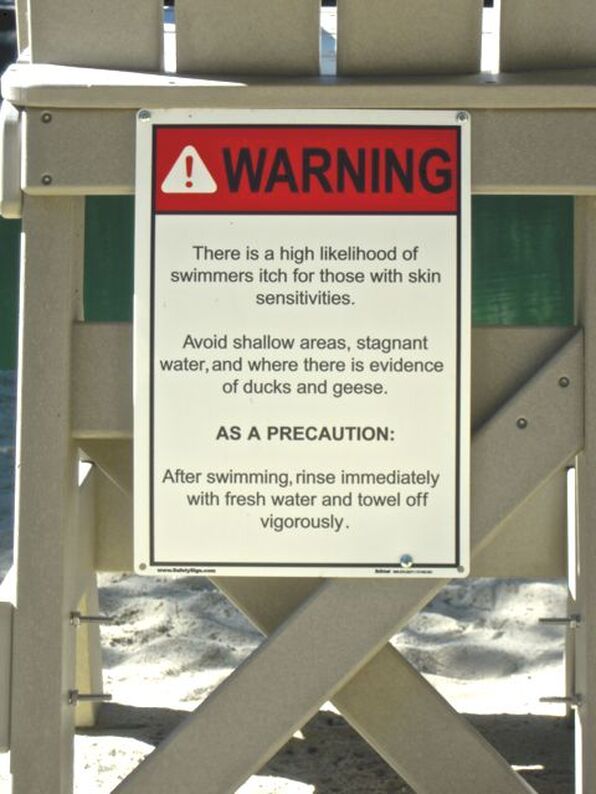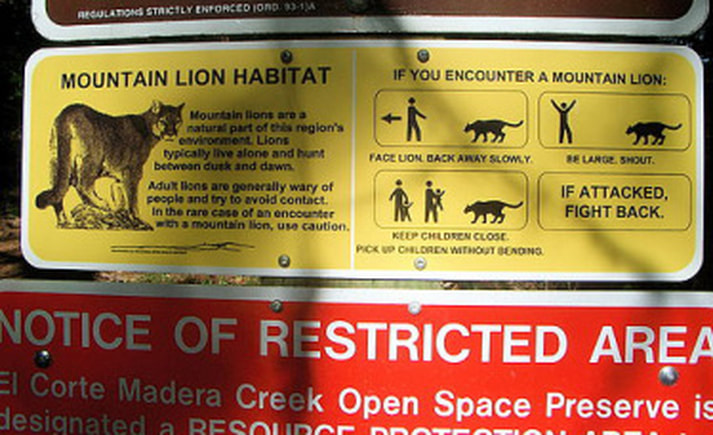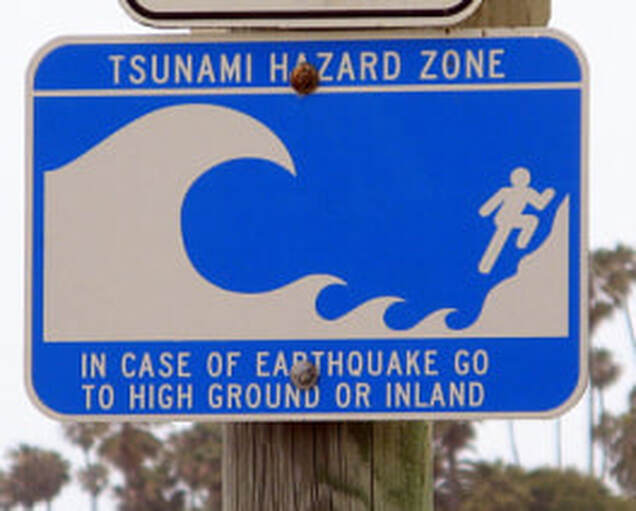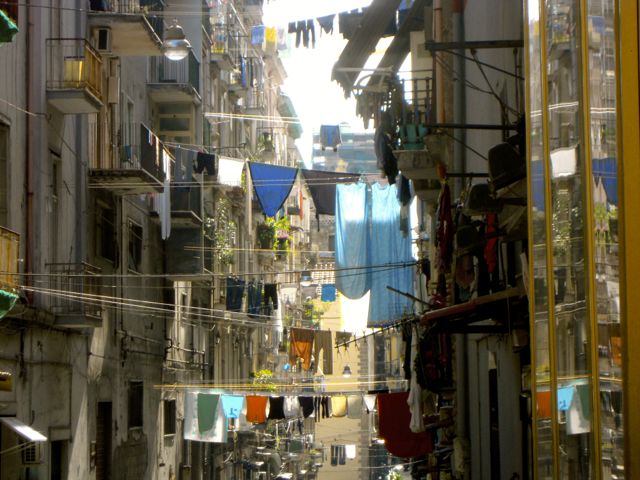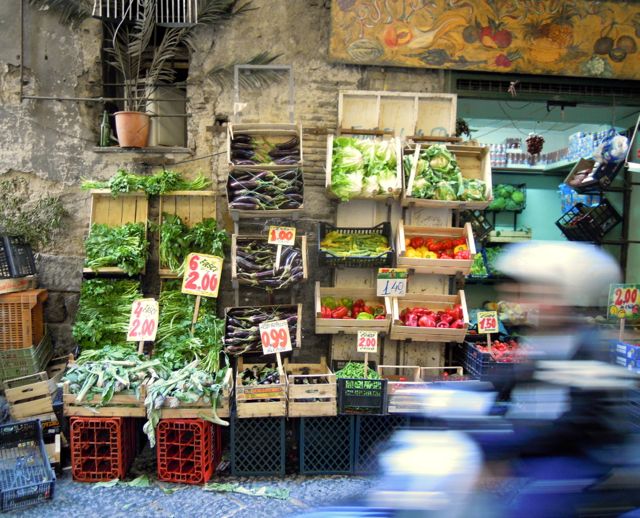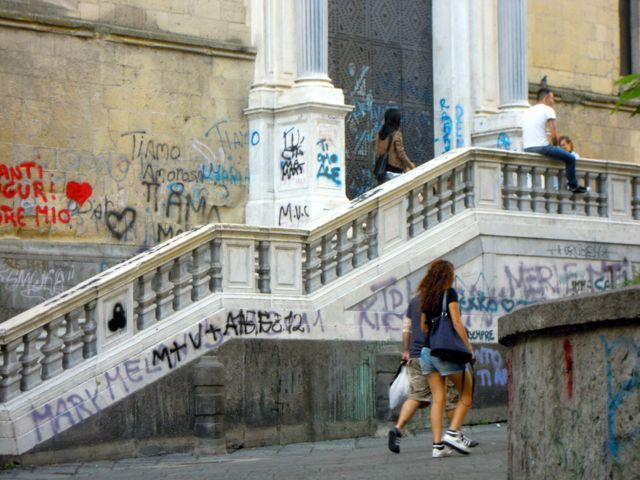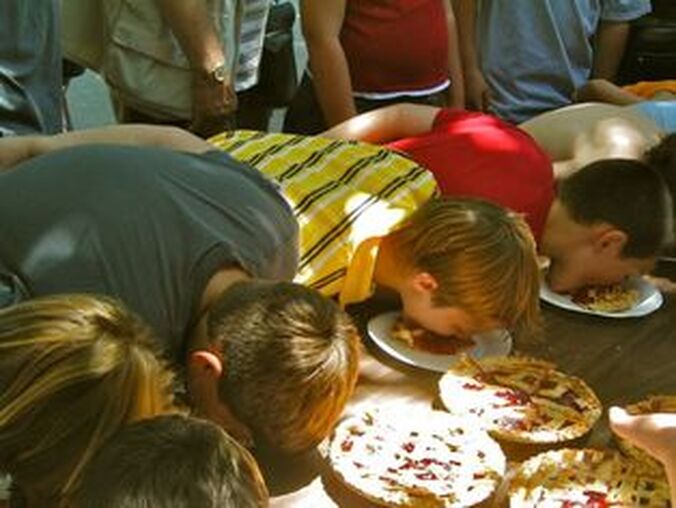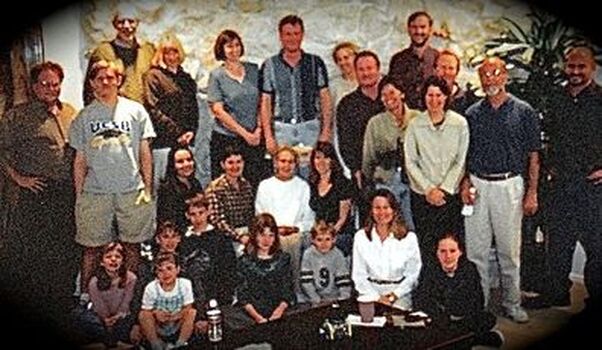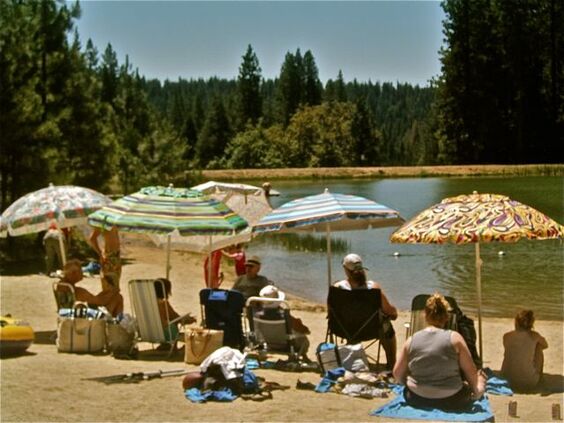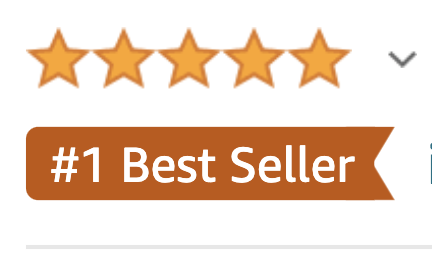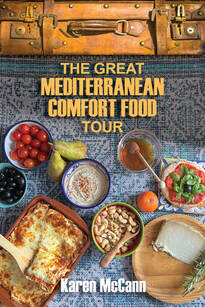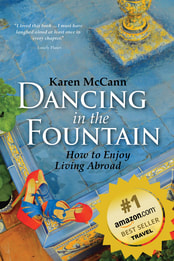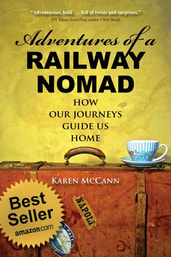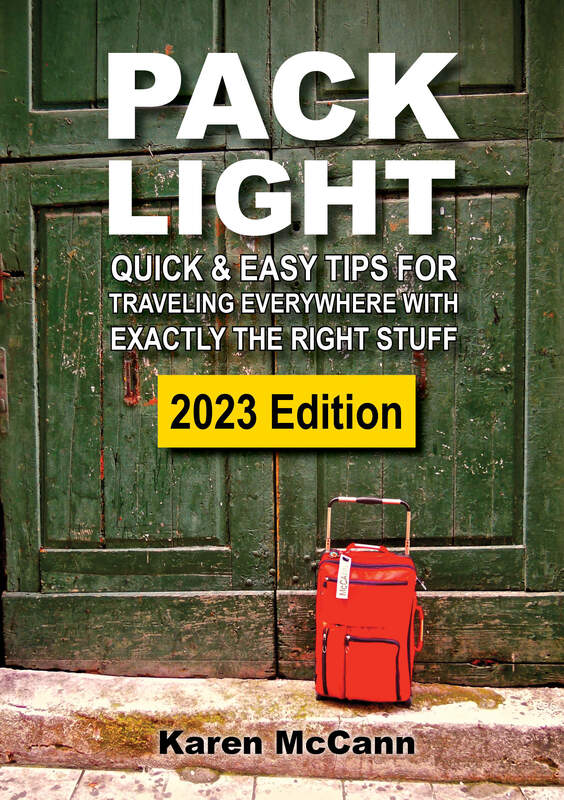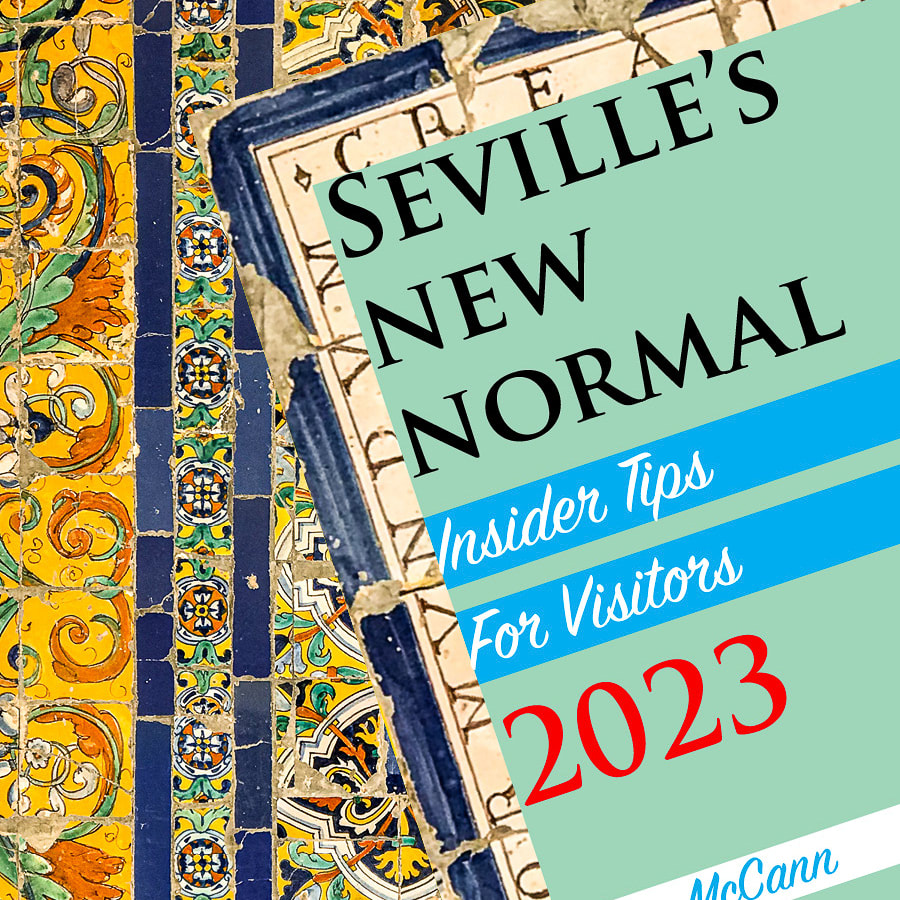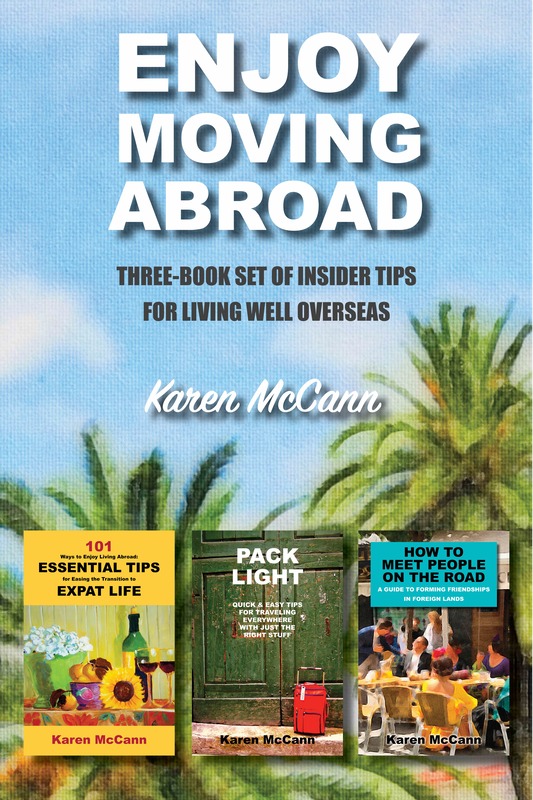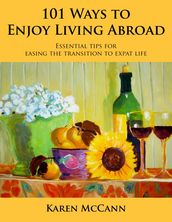|
Last week, after a refreshing dip in the California lake where my family has vacationed for twenty years, I walked past the lifeguard stand and read this sign for the first time: Wait, what?!? I have all sorts of skin sensitivities, entered the lake through a shallow area (doesn’t everyone?), and practically had to step over a flock of foraging ducks to get to the water’s edge. There was no shower available, and it would be at least an hour before I could get back to my cabin and wash off. And come to think of it, my skin was feeling a bit prickly… “Oh my God,” I said to my sister. “I’m getting swimmer’s itch. Did you see that new sign?” “New? That sign’s been there for years. Nobody pays any attention to it.” Whenever I return to my native California after a long sojourn in Spain, I am gobsmacked by the astonishing number of warnings in our everyday environment. In other, less litigious societies, you’re expected to know that coffee is hot, pavement is slippery when wet, and hair dryers and showers don’t mix. But in America, just about everything carries a warning. Here are a few of my favorite examples:
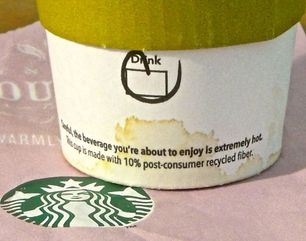 Obviously, it’s a miracle any of us are still alive, and thank God these public-minded companies are looking out for our safety. And yet, I can’t help wondering if all these alarming advisories do any real good. Besides the danger of fracturing your funny bone from laughing at their absurdity, the very frequency of these alarming footnotes on everyday objects makes it easy — even necessary — to ignore them. After a while, as my sister said at the lake, nobody pays any attention to them. Remember the famous case of the woman who successfully sued McDonalds after burning herself on their coffee? It turns out there was a hot-beverage warning on her cup – although, as her lawyers were quick to point out, the type could have been larger and the wording could have conveyed a more urgent sense of imminent danger. While some printed cautions are highly appropriate, the overabundance of them sometimes leaves me with the uncomfortable sensation that all my household goods — and Mother Nature herself — could attack me at any moment. I realize that I won’t actually be any safer when I return to my warning-free apartment in Seville, but I don’t think I’ll be in any greater danger of swallowing a hammer or curling iron either. I have already made a mental note not to pour hot coffee on my lap in the morning. So the only things left for me to worry about are the lingering effects of the biohazardous lake and the brain fever I’m likely to get from trying not to think about all the dangers I’ve been warned about all summer. Need more to worry about? Here's a list of cautions and warnings about dangers you probably never suspected were lurking right in your own home.
13 Comments
If you Google Naples, Italy, you’ll find “79 Tips on Naples Warnings or Dangers – Stay Safe!” where travelers can express their feelings about the city, mostly using such terms as “filthy,” “dangerous,” and “stay away.” Many complained bitterly about “helpful” residents who turned out to be thieves, and described, aghast, the staggering amount of garbage on the sidewalks thanks to landfill disputes involving the Mafia. One visitor wrote, “Naples in general is a horrible horrible place. With no redeeming value. Avoid it at all cost if possible.” And yet, rumors trickled around the travel community that Napoli (to use it's proper name) had a certain fascino, a kind of fascination, and last fall, Rich and I decided to go. “If it turns out to be ghastly,” we told each other, “at least it will be colorful and ghastly.” Several of the “79 Tips” people mentioned the insane traffic (“SHOW NO FEAR” wrote one), but even that didn’t prepare me for the taxi ride. Our driver was a gonzo road warrior, hurtling along at breakneck speed, shooting into impossibly small gaps, riding up on sidewalks, flying past stop signs, going against one-way traffic, and zooming up trolley tracks in the wrong direction. His spirited commentary indicated the many shortcomings of his fellow motorists. They were mouse-hearted chumps who drove like old ladies on their way to church. What was that fool doing (loud honk, shouted curses, creative hand gestures)? Who the hell stops at a red light? OK, I didn’t really understand a word he was saying, but I assure you that was the gist. I clutched my daypack to my chest, wondering how effective it would be as an airbag in the crash that was beginning to seem inevitable. The city flew by in a blur of crumbling walls, scabrous grime, peeling paint, vegetable stalls, people, and Vespas. Everyone seemed to be shouting at once, often at our cab driver. It was Mr. Toad’s Wild Ride as filmed by Fellini. It was a pure adrenalin rush. I loved it. Incredibly, Rich and I survived the taxi ride and were soon exploring the city on foot. There were café tables everywhere, jammed with people eating Napoli’s justly famous pizza and talking at full volume, gesticulating wildly, like ham actors underscoring a point in an amateur play. Overhead, old ladies were lowering baskets from third floor windows to relatives on the ground bringing them groceries. Laundry was strung from every balcony, fluttering in the breeze. “Hold on a minute,” Rich said, stopping suddenly. “Is that graffiti on a church?” “They are so going to hell for that,” I said. “Their souls are toast.” But I looked again and realized this wasn’t random graffiti but pairs of names, often accompanied by hearts and the words “ti amo,” (“I love you”). Here was a Bizarro-World, street-punk version of the ancient tradition of posting the banns. Napoli’s young people were still going down to the church to declare their love publicly, in front of God and everybody, just in a slightly different way than their ancestors did. It was really rather sweet – for sacrilegious vandalism. And that, I think, is Napoli’s gift to the world. They do everything “wrong.” They don’t obey the rules. In fact, they seem to pride themselves on not being intimidated by the constraints of ordinary society. People live at full tilt and top volume, without apologies. I suspect the first thing they teach their kids is how to color outside the lines. And from what I can see, they’ll never clean up their act in order to become the next vacation playground for the cruise lines. The city’s robust, free-for-all atmosphere demands that you embrace the chaos or (sometimes literally) be run over by it. Yet all these “wrongs” add up to something very right: a city that knows what it loves and lives as it chooses. Napoli doesn’t try to seduce you, which is why it’s so easy to fall in love with the city – not despite its faults, but because of them.
Have you or anyone you know ever visited Napoli? How was it? Tell us about the good, the bad, the ugly, and the just plain weird – post your comment below. When American friends become engaged to Sevillanos, they are often staggered to learn that in accord with Spanish tradition, they’ll be having lunch with their in-laws every Sunday. "Every Sunday?" they ask in stunned disbelief. "We have to eat with your parents and your brothers and your sisters every single Sunday for the rest of our lives?” In the US, that kind of family closeness is unusual, almost unimaginable. We’re simply not used to it. But Americans never like to miss out on things, so we’ve come up with an efficient way to jam intense family contact into a single weekend. I am talking about, of course, the family reunion. 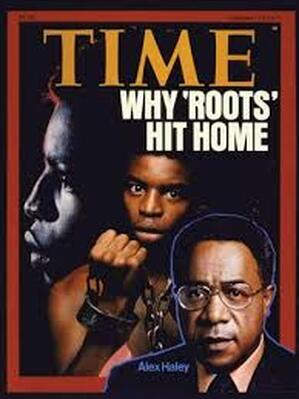 When I was a child, we often visited back and forth with relatives, but no one I knew had ever attended the kind of full-scale clan gathering you see today. That custom entered our culture in 1977 with the miniseries Roots: The Saga of an American Family, from the book in which author Alex Haley traces his ancestry back to an African sold into slavery. Haley’s story later fell into hot dispute over plagiarism and questionable genealogy research, but that didn’t change its impact. Overnight, it seemed as if the entire population of America realized that knowing something about our ancestors might teach us something about our selves. Millions started tracing their genealogy, asking Grandma about the old days, and holding family gatherings. Twice in the last two decades, my cousins have organized reunions, big chaotic affairs filled with laughter, stories, faces I hadn’t seen since childhood, and names known only through anecdotes. I realize it's unfair to dislike someone because they were cruel to a teddy bear in 1956, but sometimes it’s hard to get past the past and see them for who they are today. Most years, our reunion is meeting my sisters and their families in the mountains of northern California, where the main activity is sitting under beach umbrellas on trucked-in sand beside an artificial lake and talking about how great it is to get back to nature. We enjoy non-electronic pastimes (remember them?) such as charades, Monopoly, and pie-eating contests. When the kids were younger, I was the weird aunt who told hair-raising tales about the Man with the Hook, the Disappearing Teenager, and the Monkey’s Paw. Many of those kids slept with the light on for years, but they all begged for more. At the very least, I gave them something to talk about at future family reunions, to say nothing of sessions with the psychotherapists they'll need someday. This summer, nearly half of all Americans will attend a family reunion, often traveling hundreds or thousands of miles to be there. Many are enormous gatherings requiring a year-long effort to track down every third cousin twice removed and arrange activities for all ages, tastes, and budgets. Naturally, a family-reunion-planning industry has sprung up to help. If you Google “planning a family reunion,” you’ll get 63,000,000 hits. The first one shows a cartoon man in Bermuda shorts holding a drink. The text reads: “Welcome to Mister Spiffy’s Reunion Planner. Mister Spiffy is a family reunion doctor trained in healing sick reunions.” This is disturbing on so many levels. First of all, if he’s a family reunion doctor, why is he called Mister Spiffy? More importantly, what’s a sick reunion? I guess you need to download his free demo and purchase his software and resource guide to find out. Somehow I feel Mr. Spiffy’s first move would be to prevent me from telling horror stories to impressionable children, his second to recommend a 12-step program for my teddy-bear-torturer phobia. But when it comes right down to it, isn’t the purpose of a family reunion to learn more about who we really are – warts and all? Next week, Rich and I are meeting my sisters at that artificial lake. Like millions of Americans, we’ll talk about the old days, make new memories together, and celebrate the fact we managed to do it all without the help of Mr. Spiffy and his software. Is a family gathering part of your summer? I'd love to hear more about it in the comments below! 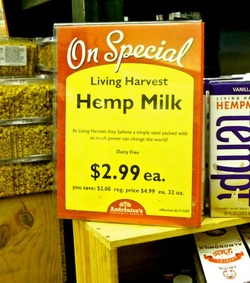 I love my native California, but sometimes it’s hard not to view it as a caricature of itself. Take the latest supermarket offering: hemp milk. Yes, it’s actually made from cannabis plants, but – as the manufacturers hasten to assure us – it contains only trace amounts of THC, the element that gets you high when you smoke the leaves. It’s rich in all sorts of nutrients, but I suspect a lot of old hippies are buying hemp milk more for the nostalgia value than the omega-3 fatty acids. They may not smoke pot any more, but they can get a kick from pouring it over their granola. Rich and I were the only people who seemed gobsmacked by the presence of a cannabis-based beverage on the supermarket’s shelves. And I reflected, not for the first time, that while one of the benefits of returning from a trip is seeing familiar places with fresh eyes, the downside is that you can have a disorienting sense of being out of step with those around you. Worse, you can feel out of step with yourself. If being on the road leaves you discombobulated, don't worry, you can take these simple steps to start getting recombobulated. 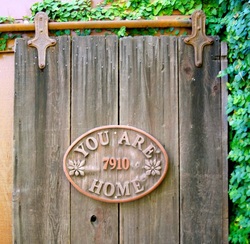 Our Ohio house number, now on our shed in CA Our Ohio house number, now on our shed in CA 1. Unpack your bags – physically and mentally. Seeing your clothes and gear come out of your suitcase and get distributed around a house is a powerful signal to your psyche that you’re here to stay awhile. I learned this from my dog; when we traveled and left her with friends, the moment Pie saw her possessions (blanket, bowl, chew toy) in a new place, she settled right down. 2. Go food shopping. Nothing is quite as grounding as purchasing milk, cereal, and bananas. Buy things you’ve missed during your travels. (Granola cookies and hemp milk, anyone?) 3. Take a walk. Strolling past well-known places really helps you reconnect. Arriving in San Anselmo, Rich and I visit our favorite coffee house, then head to the town’s new park, where I greet the statues of Indiana Jones and Yoda while Rich relaxes to the soothing sounds of the fountain. 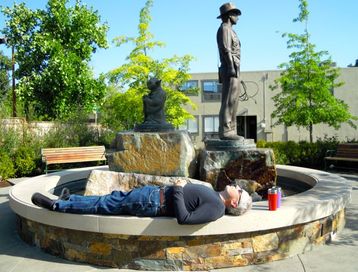 A park donated by our most famous resident, George Lucas A park donated by our most famous resident, George Lucas 4. Read the local newspaper. It’s the little stories that remind me why I love this quirky place. There was the one about a man reporting his wife’s jewelry being stolen – years after it had gone missing; suspicious loitering that turned out to be firefighters answering a call; and a woman insisting that her house was sweltering because a neighbor was filling it with hot air (it was July). Yes, that’s my town! 5. Visit the public library and the local bookstore. I love my Kindle, but to me, few sights say “home sweet home” like a stack of books on my bedside table. 6. Get back into your routine. As soon as I’m back, I start writing every morning and doing yoga three times a week. Rich is currently taking ukulele lessons; I think he’s planning to spearhead a trend in flamenco ukulele. 7. Get together with friends and family. A few hours of gossip about the latest dramas will make you feel as if you never left at all. 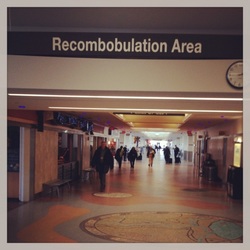 If you’re suffering from “soul delay,” as speculative fiction writer William Gibson calls it, these simple acts can help your soul (and your psyche, mind, and heart) catch up with your physical body’s new location. They’re gentle, powerful reminders that you have arrived in a place where you belong, and it's time to hang up your hat, kick off your boots, and make yourself at home. Do you have any special tricks that help with re-entry? I’d love to hear about them! Many thanks to Robin Killoran, who wrote last week about the Milwaukee airport’s “Recombobulation Area” sign just past security, and to John Baxter for talking about author William Gibson, who coined the term “soul delay.” Your comments helped inspire and enliven this week's post. 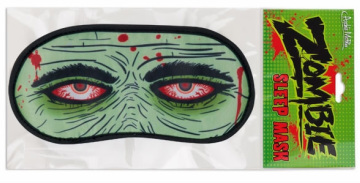 Rich could have modeled for this! Rich could have modeled for this! My husband recently experienced his worst jet lag ever. We had just arrived in England, and for the first three days he was an absolute zombie – exhausted, forgetful, dozing off at odd times in inappropriate places. This was especially disturbing since we’d flown there from Spain, where the time difference was only an hour. In my usual compassionate way, I kept saying, “Snap out of it!” and “What’s wrong with you?” Finally, on the third night, Rich came out of the hotel bathroom holding two identical pill bottles, exclaiming, “I haven’t been taking my new prescription, I’ve been taking sleeping pills! I’d forgotten I’d even packed them.” The pills and their containers were virtually indistinguishable until you read the fine print, and I suppose I should be grateful he discovered it as soon as he did, before he was permanently comatose. He stopped taking the sleeping pills and his “jet lag” disappeared. Real jet lag is not, of course, quite that easy to shake off. The disruption to our circadian rhythms by the sudden shift in the schedule of darkness and light, coupled with the natural stress and dehydration of hours spent in a vibrating plane breathing recycled air, can leave us weary and discombobulated for days. What’s a traveler to do? 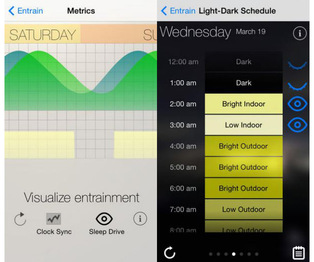 Some people are trying the hot new anti-jet lag apps, such as Entrain, Jet Lag App, and Jet Lag Rooster, all based on calculating the light you need (bright indoor, low indoor, bright outdoor, etc.) to adjust your sleep-wake patterns. I’m sure the apps are brilliant, but I have absolutely no intention of using them. Nor will I be attempting the Argonne Anti-Jet Lag Diet, a complex program of feasting and fasting that I could never manage without an app, a personal chef, and an enforcer. And I’m definitely skipping the Harvard/Beth Israel anti-jet lag fast, in which you stop eating altogether before and during a flight. What fun is that? No, I’m sticking with my tried and true jet-lag-reduction strategies. They may not be perfect, but they are realistic, effective, and simple enough to manage on the fly – which is how most of us are living these days. 1. Drink water, not alcohol. Dehydration is a major factor, so skip the martinis and guzzle water. Worried this will require multiple rest room trips? See Tip #2. 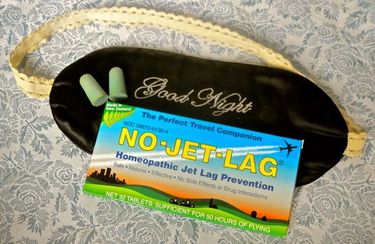 2. Walk around on the plane. Boost your circulation with frequent strolls up and down the aisles. 3. Take No-Jet-Lag. For me, this homeopathic remedy really takes the edge off post-flight suffering. Arriving on the other side of the country, or the planet, I may still be tired, but I don’t feel trashed. 4. Sleep on the plane. On overnight flights lasting ten hours or more, I take half a low-dose sleeping pill; some people favor melatonin. On shorter trips I avoid sleep aids as I find arriving in a drugged stupor is even more disagreeable than jet lag. 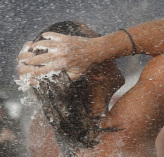 5. Have coffee and a shower when you land. Unless it’s nearly bedtime in your new time zone, it pays to perk up with a little caffeine and to rehydrate yourself externally as well as internally. 6. Adapt to the local sleep schedule as best you can. Even if your body is saying you need a nap now, push yourself to stay awake until after dinner. Walks and other physical activities help. Chances are you’ll bounce awake at some ungodly hour, such as 4 AM, so you may want to consider a sleep aid the first few nights. 7. Be kind to yourself. Even with the most effective remedies, transitions are hard, and jet lag drags at the body, soul, and spirit. Try to accept this with good grace and remember it’s only temporary. Adjustment typically takes a day for every hour of time change. If you manage it any faster than that, go out and celebrate. Do you have a favorite remedy for jet lag? Have you tried one of these new apps or diets? I’d love to hear from you. |
This blog is a promotion-free zone.
As my regular readers know, I never get free or discounted goods or services for mentioning anything on this blog (or anywhere else). I only write about things I find interesting and/or useful. I'm an American travel writer living in California and Seville, Spain. I travel the world seeking eccentric people, quirky places, and outrageously delicious food so I can have the fun of writing about them here.
My current project is OUT TO LUNCH IN SAN FRANCISCO. Don't miss out! SIGN UP HERE to be notified when I publish new posts. Planning a trip?
Use the search box below to find out about other places I've written about. Winner of the 2023 Firebird Book Award for Travel
#1 Amazon Bestseller in Tourist Destinations, Travel Tips, Gastronomy Essays, and Senior Travel
BLOG ARCHIVES
July 2024
CATEGORIES
All
|
